Aircraft carrier HMS Prince of Wales is feared to have suffered damage to her propellor shaft near the Isle of Wight.
The warship is now at anchor as the potential damage is inspected. I contacted the Ministry of Defence and was told.
“Having sailed from Portsmouth, HMS PRINCE OF WALES remains in the South Coast Exercise Area.”
A source told me that divers were sent down to determine what was wrong after issues were noticed onboard, and once they returned, the divers had concerns over the starboard propellor shaft. I was told that the shaft itself appears to be damaged, but I don’t believe it’s appropriate to comment on the extent of any potential damage at this stage, given the specifics of any damage cannot be confirmed.
It is currently unknown if the vessel will have to go alongside to correct the issue.
The vessel was due to deploy to the United States on what the Royal Navy referred to as “a landmark mission to shape the future of stealth jet and drone operations off the coast of North America and in the Caribbean”.
The vessel was to visit New York, Halifax in Canada, and the Caribbean. The next three months would have seen the Prince of Wales and her escorts work closely with US allies, “operating F-35B jets and uncrewed systems which will define Royal Navy aviation of the future”.
As you can see above, the vessel appears to have stopped whilst conducting manoeuvres off the Isle of Wight and s now at anchor.
The original departure of the vessel earlier this week was delayed, with families of crew reporting a technical fault causing the hold-up.
HMS Prince of Wales recently returned from Spain
The carrier has been busy recently. HMS Prince of Wales returned to Portsmouth in June after being involved in Spanish naval exercises off their Atlantic coast, “boosting security and NATO allies’ ability to operate together in the region”.
The aircraft carrier was involved in a “display of force” as the aircraft carrier operated with Spanish flagship Juan Carlos I and worked on commanding and controlling the multinational NATO force. The carrier is currently the lead vessel in NATO’s Response Force – which in theory can be deployed anywhere at short notice to react to world events.
As above, this article will be updated when the extent of the issue is made clear.



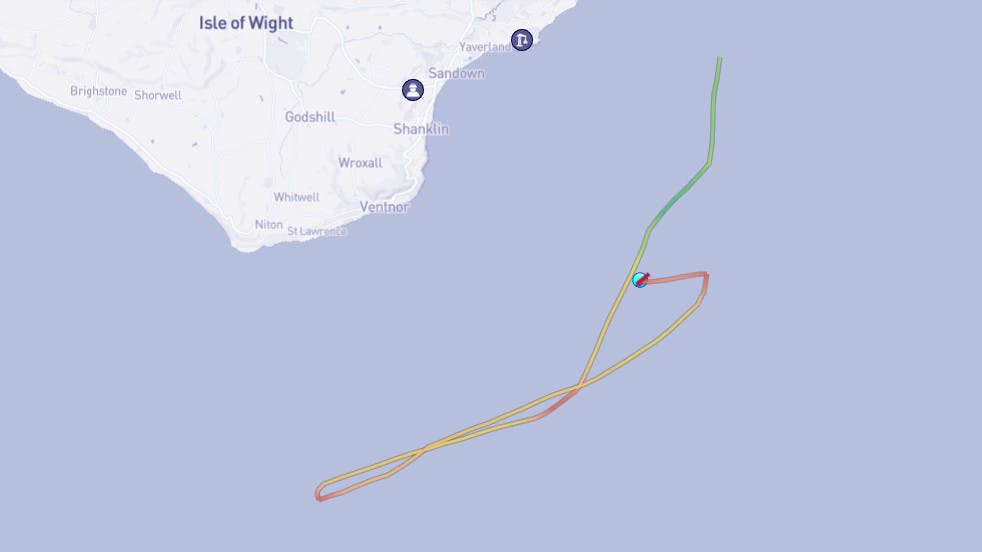
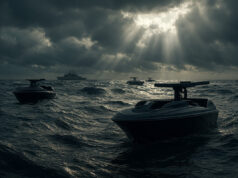
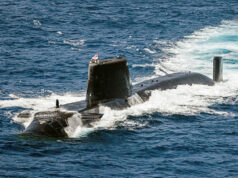

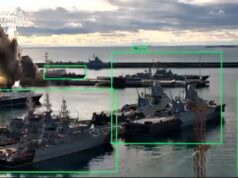
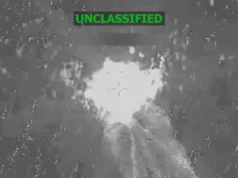

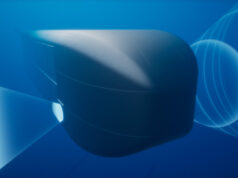
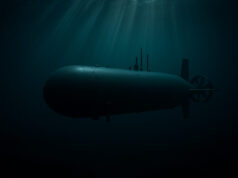



Hmmm….
Time to lease some currently idle Russian tugs? I hear they have experience escorting the ‘not so sea worthy’ Russian carrier, hey?
Sorry only joking, us Aussies have a historical duty to take the piss out of you Poms! Ha ha!!
Actually just wondering when the Aussies are going to get back into the carrier game too? The Ford class are ridiculously expensive but a version of the QE class carrier could be ideal.
My heart always says it would be nice to see the RAN with a fixed wing carrier capability again, but my head says no.
As it stands today the two Canberra class LHDs provide a very valuable amphibious capability, to convert/modify to operate a few F-35B would detract from their primary role.
In any event, in a ‘hot’ regional situation/conflict, the RAN is more likely to be part of a much larger coalition operation that would include the US, and possibly Japan, South Korea and India too.
Can’t have every capability (the Defence budget wouldn’t cope), and especially with the huge sums that will be spent on the RANs fleet of SSNs.
Substantially agree w/ your text, especially, that the RAN SSN fleet will require substantial long-term investment.
However, in future years an Australian government may reevaluate Indo-Pacific geopolitical/defense balance of power, and may choose to invest in a STOVL carrier capability, as the Japanese have recently done. The intent would, of course, be the capacity to hold PLAN fleet at risk, at distance from home waters.
Not going to happen.
It’s not just Dollars, (Dollars can be found in the Defence budget if the Government so desired). It’s also about manpower (which is a cost too).
The RAN (and ADF generally), is growing capability across the board, adding a dedicated fixed wing carrier on top of existing and growing capabilities, would cause all sorts of manpower problems.
A small/medium STOVL carrier or two, also requires escorts, additional DDG and FFG, more dollars and more manpower too.
As for holding off a PLAN fleet, that will be the job of the RAN SSNs and also RAAF aircraft with long range precision weapons such as LRASM and JASSM-ER, both of which are on order.
Again, carrier isn’t going to happen, there are bigger priorities.
G’day John,
I was going to ask you if the RAAF Hornet/Growler’s are USN carrier compatible ?
Then we can just add a (second hand) carrier, some extra AAW Hobart’s, another tanker and a couple more subs for protection. Like you say, probably not going to happen, but sharing the Hornets/Growlers with USN Ops I thought could be useful for power projection.
But I do hope the RAN might get an extra 2-3 long range diesel subs to patrol and protect the Darwin-Sydney and out into Oceania in strength and depth. Might have to cover a bit for the Kiwi’s too.
Quentin,
Mate, you bring up a number of points, some are leaving me scratching my head.
Yes, to the best of my knowledge RAAF Super Hornets and Growler are identical to their USN sisters, but don’t forget RAAF aircrew are not capable, or trained in, CATOBAR operations, it’s not just being qualified ‘once’, it also requires regular training to continue to be qualified.
As to ‘we can just add a second hand carrier’, seriously???
Where do we find a spare second hand CATOBAR carrier? Where?
There are no spare CATOBAR carriers, the last one retired was USS Enterprise, currently being scrapped.
The next CATOBAR carrier due to be retired is USS Nimitz in approx 2025, she will be 50 years old and probably in a poor material state too.
And let’s not forget those ships need a crew/aircrew of 5000+, you need to think about that idea again in much more detail, hey?
Two or three more conventional subs? No, no and no.
We need to focus attention, money and resources, on getting the future SSN fleet into service ASAP, don’t waste effort on a ‘new’ class of conventional subs.
The six Collins class boats start their LOTE upgrade in 2026, and follow at two yearly intervals, this gives each boat another 10 years service life, the class will then retire between 2038 and 2048.
Anyway, interesting ideas, not very practical though.
Cheers,
It would make more strategic sense, and be financially and manpower wise more achievable to purchase a couple of squadrons of B-21’s for the RAAF instead. Now that would really give PLAN planners the cold sweats at night.
Hi John, I was kind of half joshing about the second hand carrier, I was more thinking that as a contingency and force projection measure that some catobar training for the RAAF pilots could potentially mean carrier sharing with USN and even the French a bit like the RAF/RN and the US do with the F-35Bs on the QE. I’m not sure if the RAAF still gave/use/co-share Butterworth in Malaysia these days?
With the subs, if the SSN fleet can’t come soon enough they’re surely going to need an interim solution for an extra 2-3 subs maybe? Something as close to the Collins might be doable with CS fit out could be replicated to some degree with the Collins LOTE upgrade. Agree that it all adds to logistical complexity and costs and may not be worth it in the current time frame. Anyway, I guess we have to see what happens and leave all this to the experts.
Spot on.
Do one new thing and do it well.
Adding SSN is massive anyway and probably far more effective than adding a bit part carrier capability and o overstretching things in all directions.
Sounds a bit like the UK
Not so much.
We made it harder with the Harrier -> F35B break.
We have had SSN and carriers for decades.
Difficult surely to support the design and construction now for Stovl carriers when by the time they are in service it’s difficult to know the effectiveness of what can actually fly off of them. A lot depends on whatever decision the US makes on re engining the F35 which could effect our own capabilities but to start operating such a carrier in the early 30s could look a bit embarrassing.
Surely any US re-engining of F-35Bs will make them more effective – ie why would there be doubt as to their future effectiveness?
Because there are doubts about whether the F-35B will be re-engineered, or if the USAF will succeed in their push for engine changes for the F-35A incompatible with the F-35B. To make best use of the block 4 options, more power is needed, and if the B is left behind as an afterthought for another decade or more, it affects us.
Very simply because the Jarheads will not permit USAF to outmaneuver USMC for program funds. USMC is more than capable of holding it’s own in a knife fight for funding w/in hallowed halls of Congress.
Thanks Jon, Others have commented that the USMC, for one, would not tolerate being left behind as regards engine development for the ‘B’. I read that the ‘B’ could not take the ‘adaptive’ engine but could take the EEP engine. Another option for the UK might be for RR to produce a developed F-136.
Fear not, the Gator Navy (USMC, especially the amphibious fleet) has an extremely influential lobby w/in Congress. There will be an updated and/or replacement engine for F-35B. Guaranteed! Timeframe may be subject to negotiation. Diplomatic lobbying by allies dependent on F-35B will also be a factor. RN tying itself to USMC was a master stroke; the blokes at the Admiralty are both more intelligent and politically adept than many give them credit for.
Perhaps, but it makes me wonder if this is a factor in South Korea’s on-again off-again attempt at CVX. If Congress had displayed your level of certainty/commitment, might Korea have actually started the build on time as opposed to missing their funding window for yet another year?
Newish SK gov’t–uncertain re their current defense program priorities. Remember also that the F-35 SPO mgt. are currently up to their asses in alligators (Block 4 delivery, logistics, maintenance schedules and costs, convincing all stakeholders to support ramping up production quotas and schedules, placating international partners, answering the mail from GAO and Congress, etc., ad nauseum). Future mods occasionally require some additional time and thought. 🤔😁
I believe the Canberras where built comparatively lightly compared to their Spanish forebearer, so it would be ridiculously difficult to retrofit them for F-35s.
Actually I’ve heard conflicting reports about how, and to what standards and modifications vary from the parent JC1 design.
Some have said it would be a significant cost to modify for STOVL operations, I’ve heard from some people (reportedly in the know), that modification aren’t that difficult.
Another point is that whilst JC1 operates Harriers, it will also need modification if Spain ever plans to operate F-35B.
Regardless of all of that, their primary role in RAN service is, and will be, amphibious operations.
One role that is very possible is the ability to operate as ASW carriers, load up with a deck and hangar full of MH-60R.
I had heard similar to you John not difficult to modify but the required modifications would be pricey and the individual who I spoke to couldn’t see a way that canberras would operationally hold more than 4-6 aircraft for CAP in an amphibious role.
It would be a good bonus capability for Aus and Spain if offensive Ops were on the cards. SSN fleet is probably more of a force multiplier than 4-6 F35B in a hot situation.
You Aussies are the most level headed folk in the world. With chips on both shoulders!
Having the capability to cross deck F35B could be a very useful asset for any combined flotilla. Giving the possibility of extending CAP range for British and American F35Bs. It only needs a section of heat proofing on the flight deck and qualified crew. You forgot to include Taiwan in your list of coalition members. They will likely be heavily involved. As will the RN.
The anglosphere is always stronger when standing together, as one.
George,
Us Aussies have a chip on both shoulders? What an odd comment? Are you feeling ok? Why so?
If a future coalition taskforce, or operation, requires the RAN LHDs to leave ‘space’ for possible cross decking shows a lack of planning.
Should every DDG and FFG also be set up for cross decking too? No.
Different ships from different nations have specific tasks to perform in a potential coalition operation, every ship can’t be ‘everything’.
If an amphibious operation is not required, the LHDs could easily operate as ASW carriers, enemy submarines are likely to be a bigger threat.
And no I didn’t forget Taiwan, simple reason, they are not a coalition partner, for the very clear political reasons we all know about.
As for RN involvement in the Asia-Pacific, don’t forget you Poms have been ‘absent’ for the last 50 years, true?
I welcome the UKs recent involvement in the region again, hopefully we see that turn into a long term commitment, hey?
GMTU John. I have always thought that to retain the ski ramps on the Canberras didn’t make much sense. They take up considerable deck space and beg the question as to..why? Surely a strengthening of the deck and ramp at time of construction would have made more sense and given them the option-even part time of deploying VSTOL jets? Alternatively,a modification at time of build would have given valuable and usuable additional real estate?
Geoff,
The reason the Canberra class LHDs are equipped with the ski ramp has been discussed many times on many forums for many years.
There is actually a very simple reason too.
The ski ramps are an integral, and structural, part of the ships bow from the parent JC1 design (they are not separate units ‘bolted’ on top of
a flat deck).
It was decided that to redesign and remove the ski jump would have added considerable cost and also delayed production and delivery too.
As for taking up deck space, the LHDs have six spots for simultaneous operation of MRH90/MH-60R sized helicopters, or four spots for simultaneous operation of CH-47F helicopters.
Basically they don’t interfere with ship operations.
As for the question of STOVL and F-35B, the LHDs are not aircraft carriers, their role in RAN service is for amphibious operations, adding 4-6 F-35B detracts from their primary role and function.
In any event, the RAN won’t be sending the ships into a ‘hot’ environment on their own, in such an event they will be part of a larger coalition operation, most likely alongside USN LHAs, LHDs or CVNs.
Spending money on ‘part time’ carrier operations is a waste of money in my opinion.
Cheers,
Thanks John. I have a sense of deja vu” discussing this with you 🙂 and understand your comprehensive reply, but at some stage this ship must have been designed to accommodate Harriers. It of course makes sense to retain it if it is more expensive to modify it to a flat deck even given for the fact that additional flat deck must have at least some utility better than the sloping deck. Also would not the higher profile at the bow produce more resistance and hence affect fuel consumption?
Cheers from Durbs
Geoff,
It’s worth going back to the beginning of the project that resulted in the Canberra class.
The requirement was for two LHDs of approx 20,000t that could operate five to six helicopters simultaneously (these two new ships would replace the much smaller Kanimbla class LPAs).
There were two short listed contenders, the smaller French Mistral class design (199m x 21,500t), the French eventually offered a ‘stretched’ design of approx 24,000t.
Spain offered the JC1 design, 231m x 27,500t, a much larger design than the French, and significantly larger than the original requirement too.
If you go back to the original requirement, the Spanish design was larger and more capable, regardless of the ‘ski jump’ at the bow.
Ultimately the RAN received a larger and more capable LHD than originally planned for.
Sort of makes the STOVL carrier debate a bit of a mute point.
Going back to the original Spanish design, JC1, she was built as a multi role ship, primarily amphibious, but also as a ‘backup’ to their primary PdA carrier.
It’s a pity some people can’t look past how the Canberra class ‘look’, and actually go back to the original requirement.
Just because it looks like a STOVL carrier doesn’t mean it was meant to be in RAN service.
Cheers,
Understood John-all makes sense. Enjoyed chatting. Kind Regards Geoff
No worries Geoff.
Enjoyed the conversation too, look forward to the next one!
Take care mate, John
(PS, it’s just after 7.30pm Sydney time, kicking back with a drinkie or two or three or ….. Ha ha!)
Cheers John!
With Turkey also having a similar JC1 vessel and proposing to using it as a drone carrier this is something that could be also done by the RAN. I also thought that I read somewhere that the former Chief of Staff Angus Houston, who’s still around, was wanting a Canberra sized aircraft carrier for the RAN at one stage?
I can recommend a youtube video,
The F35b option: the future of austrailian naval aviation?
Another option to increase sortie rates at a long range would be to equip the Canberra class for emergency landings, similar to hms fearless with the harrier but use the ship primarily to forward base v22s with the roro tanker kit. This this would be able offload 4500kg/6100kg (f35b) however this statistic is based on 300mile radius so could be closer to full when near the ship or have two tankers. At a push you may be able to do f35b refueling and rearming on the deck but that wouldn’t allow for simultaneous helicopter operations, which as you say is the primary mission. If Australia intends to use its voyager (or whatever the Australian’s call it) to refuel fighters more 1500miles north this could be a solution to increase sortie rates and time on station and reduce stress on the tanker force. The the v22s could also add to the anphibious assault force.
Overall this could be a cheaper alternative to acquiring a full csg capability with less political fallout while providing better CAP and CAS for Australian forces on the ground and sea.
This example could also be used from any ship capable of refueling a v22 such as most RAN, USN, RN frigates and destroyers albeit at a much reduced scale, predominantly for ISTAR perporses.
John,
Australia can hardly poke fun at the UK…. Our naval acquisitions are rapidly going off course!
A lot of our acquisitions are going off course Andrew. :wpds_shutmouth:
Interesting as she was delayed leaving Portsmouth with a fault that needed sorting out.
Do some ships, deservedly or not, develop a reputation as an “unlucky” vessel to serve on? HMS PoW had a previous shaft seal leak. Difficult for an outsider to determine whether these should be considered routine “teething” maintenance issues, or a symptom of a more complex issue(s)? 🤔
Teething.
The previous HMS Prince of Wales could be considered a very “unlucky” ship. I was surprised they resurrected the name.
PoW and shafts attracts trouble. It seems a law of nature.
So she should have been build with pods.
Ha ha, yes, the PoW shaft opening up her side. She was an unlucky ship. Pods would have been a good idea given the troubles both carriers have had with their shafts.
Do you mean (azimuth) thrusters?
If so they don’t pass shock testing. They were on one of the original designs BTW.
I was just being facetious…
Weren’t deemed fit for a naval ship after initial plan to adopt them.
The Bays have azimuth, I know they are RFA.
Also, aren’t they too slow for carriers?
Have noticed that those w/ probable first hand experience (e.g., NAB, Gunbuster, propellerman, possibly deep32, etc.) have conspicuously avoided comment. I’m gonna take that as a hint to refrain from further uninformed speculation, until specific issue revealed.
.probable similar first hand experience…
👍
All I will say is until SALMO divers have a look its conjecture.
I have worked with SALMO teams plenty of times. All are professional underwater engineering divers with lots of experience and some of the best kit around. Any decisions will be based on their report which will include measurements , Photos and detailed video.
Cracking picture in the Telegraph:
https://i.postimg.cc/R0Xs3LpK/Untitled-1.jpg
Nice
Sailing past the Still & West pub, as warships have done for 100s of years…!
Never been in, but walked past it a lot of times on my way into Pompey. But saying that, my first posting was Chatham
Posted to Chatham? I’m sorry for your loss…
What is the big P on the deck for?
Remind the pilots to put it in park mode🙈
For Prince of Wales, Queen Elizabeth has Q on the deck.
so you don’t land on E by mistake
The HMS queen Elizabeth carrier has a Q on the deck. That explains the P on prince of Wales.
What did they do on the invincible class as 2 of there names began with an I
Ahh so the big decks all have a letter on them relating to there name. Everydays a school day
Nice photo highlighting one of the empty 30mm/RWS mount positions…still. My rant, but there looks like sufficient room for a RAM launcher there synchronised with the Phalanx’s and possibly another forward on the starboard side. Okay, rant over.
The question would be is how does RAM (rolling airframe missile) operate? Could it be loaded by a contractor at the start of deployment and run without needing any maintenance? Does it require any more skills than a phalanx mount to operate it?
If say it could be loaded and the missiles don’t need to be touched for 1-5 years then maybe.
If it requires trained personnel to operate on the carrier then it’s a new system and that will cost and take time.
I like RaM as an extra layer and it’s compact.
Hi MS, I can’t answer this very well. I’m assuming that there’s got to be some commonality with the Phalanx system and its suppliers but yes, involving actual missiles is another level above. I think all the RN RFAs could do with a launcher too if not a 12 x CAMM set up. Aren’t these capital ships absolutely worth it!? The fleet needs them to operate globally and especially in a CSG.
I think it’s Raytheon as the manufacturer.
The Turkish RAM is called the LEVENT. I tried to copy some pics but failed…
https://www.navalnews.com/naval-news/2021/08/idef-2021-turkish-companies-unveil-indigenous-ram-replacements/
That Ship ( excuse the pun ) has already sailed https://hansard.parliament.uk/Commons/2002-04-24/debates/00e95200-4822-429c-b89e-efb4b7c36850/HmsYork(SeaRamTrial)
Hi Paul, pun accepted! Yes, I had read about the trials on HMS York, but ok’d options things can be revisited and the QE carriers didn’t exist back then. The RAM setup, whether the 11 or 21 configuration are still widely used by many navies so this is surely a pretty big tick that it is still suitable for current and future scenarios. Even Turkey has produced its own version of the 21 launcher, I remember its name. I don’t know if any ship launched SAMs are reloadable at sea so maybe they’re all limited in this.
I’d like to have seen the SeaStreak system have some luck and even if a StarStreak (ER) could have been adapted to launch from the 11 or 21 RAM launcher.
There is also a really nice picture on Navy Lookout.
The wake on that picture suggested that only the port shaft is turning as does this picture. Navy Lookout speculated that the problem was with the starboard shaft…
Cheers CR
Wow, agreed!
These are things ya really oughta check before you let her out.
😫😫😀
Ideal ship, planes, tanks, missiles and radars never break and need fixing…..honest guv……the Russians have weapons nobody else’s has: they never work even on a good day.
😂😂
Time to sell it.
Congratulations on the “stupidest comment of the day” 🏆
Oh hello stalker 🙄
You should be so lucky
Ah I wonder where the blogs troll was recently.
The lack of humor is strong in this one.
You realise that linguistically that that is nonsense… or are you so used to spouting it you don’t notice? 🤔
Hush, child. Adults are speaking.
So patronising as well as an idiot with poor grammar!
Any other characters flaws you want to publicise?
Brand new, broken and unfit for purpose, like those vessels that could not function in warm tropical waters, or submarines they drive into the sea bed 🙂 The Navy is nearly as screwed up as my beloved army.
Shush, don’t speak any truth, bad for morale 😂
He didn’t speak any truth in that post, just a headline one liner type opinion! And opinions are like arseholes, we all have one! Sort it out, move on, that’s what the RN will do, and if industry are found culpable with parts/spares etc then they will repair at their cost.
How’s the weather in Moscow today?
Does your mummy know you are playing with her computer again Sean.
What’s your fascination with other people’s dead relatives?
Not quite, things break, even brand new stuff! Nothing, nothing in this world is mechanically perfect! The issue isn’t that it’s broken/damaged but how good, efficient and speedy are the ability to repair!
If it is just the one shaft it could operate on one for a considerable period of time.
However, systems Redundancy and therefore safety would be reduced so it might be a toss up as to wether to send her trans Atlantic on one screw or to delay for repairs or scrap the training for the second year running.
The real embarrassment would be the failure of the other shaft/screw mid Atlantic necessitating a tow.
Agreed, it’s training not operations and therefore peacetime restrictions and safety are all relevant and important (legally as well)!
I’d expect that running on asymmetric power for so long would be great for wear on the other shaft or hull for really long periods but GB might correct me on that.
One shaft running is to be avoided unless its planned. In this case fix the other one and run on two.
Besides that you need 2 shafts for achieving wind across the deck. Without some wind you lower aircraft take off weights and limit your SHOLs
When I was in the army, our target was for 70% of key equipment to be fit for operations at all times, rising to 90% after a period of concerted maintenance work.
I am sure the Navy has broadly similar targets for availability, based on fitness to deploy. [Perhaps we should have bought 3 carriers].
Point is that all equipment has periodic availability problems, even new ones, and especially complex ones of new design.
Agreed, as though nothing outside the military suffers a mechanical break-down or is damaged in a collision… 🤷🏻♂️🤦🏻♂️
It would be interesting to find out if it’s a new ship issue or if it was some form of damage from floating debris.
I hope we have not yet paid for the bloody thing,If its broken the bill lies with the shipyard.
The HMS Prince of Wales obviously has had its Harbour Acceptance Trials and Sea Acceptance Trial and would, in my opinion, be considered in all respects ‘Ready for Sea’.
What I cannot understand is why is there such civilian involvement in the maintenance and repair of these current RN Vessels? Are our current Service Engineers unable to carry out these tasks? In my 25 year service in the RN it was ‘Come on Stokes, get down below’
Shit happens.
Complex warships break down from time to time, new and old. I served on Invincible class, and we completed exercises with just one prop. Shit goes wrong occasionally. It’s happens to all Navy’s, it’s nothing new.
Quite.
Invincible had a habit of stripping gearboxes……down to an alignment issue I was told?
Yeah send it back to the dealer and demand a new one off the forecourt. It’s shocking. Imagine buying a complex unique system and something stops working after a jolly round the seas for a few years. Should of bought a Kia carrier with the 100,000miles warranty on it. 😂😂😂
Indeed, and we don’t want any “refurbished” crap, either! A brand new one to satisfy this customer!
Don’t think whatever happened occurred ‘near the Isle of Wight’. PWLS looked like she had been running on a single shaft since just after leaving Portsmouth Harbour entrance (when more revolutions would be appropriate).
I wonder what’s caused that then. Couplings or seals is my guess. Nothing too dramatic, and relatively easy to fix.
Hit the mud is my guess but there again they recently surveyed the harbour didn’t they?
Dredged and surveyed for the carriers arrival.
These things happen. How long does such take to fix?
Morning Mate,
If it needs drying docking that’ll be a trip to Babcock’s in Rosyth, waiting for the tide to be right to get under the bridges and so on, and so on. If it is a damaged or miss aligned prop a la QE on her trials then if I remember rightly the divers we able to fix it.
I guess we’ll find out so enough.
There is a nice picture of here leaving Portsmouth on Navy Lookout and they are suggesting it might be the starboard shaft…
Cheers CR
Morning mate. I know nothing concerning mechanics, sounds logical.
Hi Daniele,
I found this rather amazing model kit online with some great pictures including one of the rudders and propellers.
https://www.admiraltyshipmodels.co.uk/hms-queen-elizabeth-warship-model-c2x36289341
You can see the A frames (in red) right behind the propellers. There are water cooled bearings supporting the shafts built into the A-frames. The thrust bearings are inside the ship close to the motors if I remember rightly.
This document of RR shows the shaftlines from the props to the electric motor.
https://www.rolls-royce.com/~/media/Files/R/Rolls-Royce/documents/news/6-page-qe-booklet-tcm92-58802.pdf
I’m not sure the sketch is to scale but with reach shaft weighing in at about 230tons and the props at 33tons there is a lot of metal that needs to be kept in its’ place.
One risk is if anything happens to those A-frames either as a result of propeller damage (out of balance forces) or direct damage. PoW (WW2) took a torpedo hit aft that caused the shaft to breakout of the A-frame. The result was a huge hole in the ship as the shaft deflected causing the shaftline inside the ship to whirl around like a skipping rope. Bulkheads had big holes ripped into them compromising water integrity of the ship which meant that the flooding from the torpedo damage could not be contained as it should have. If that was not bad enough the damaged shaft line included a power take off for the electrical generator for the 5.25in AA guns which lost power robbing the fleet of its best AA capability. The rest is history…
So yeh damaged shaftlines can be seriously bad news. Of course, the above example is an extreme case, but you really do not want a 33ton lump at the end of a long thin rod spinning at about 100 to about 250 rpm (typical rpm for big ship’s propellers) without some serious constraints being applied.
Cheers CR
Hi CR.
Thanks for that post, mate, with all the detail and links. Love that model.
I’m an artiste, and all this practical stuffs well over my head, but fascinating nonetheless.
The damage is done. For me the real question is what and how? I thought the approaches were all dredged before the QECs arrival, maybe not this far.
Sounds like they need a black cat as ships mascot.
Can anybody provide me an update on what is happening with our sky sabre air defence systems? I heard the one in Poland wasn’t working? And also why do we have so few? Cheers.
I wonder how a shaft gets damaged? If they sent down divers, they must have somehow known it was damage outside of the ship and before the propeller. Maybe the wash of the propeller threw up some sort of subsurface debris like a submerged barrel or part of a shipping container? Anybody?
HMS QE suffered a similar problem during trials – maybe more dredging is required in Portsmouth Harbour.
IIRC QE got rope wrapped around her prop shaft and that slightly misaligned a propeller blade.
If the shaft is damaged (unlikely) then you would feel the vibration through the ship.
Same with the prop alignment alluded to below: you would feel it standing anywhere close to the shaft bearings and probably the electronic propulsion system will pick up the rhythmic eccentric loadings anyway.
It probably happened during the Basin trial the day before they were supposed to sail. I saw her prep for PROD A and then it all went quiet, next day sails trailing the shaft…. the tidal range would mean difficult diving conditions on that jetty and hard to inspect.. hence leaving and then discovering the issue.
The disease of European carriers, do not worry, at least France can understand your pain.
Another new carrier, USS Gerald R Ford, has had many problems too – and a lot more money was spent on her!
Thanks for letting us join the club. Out of the EU and into the broken carrier club👍🏻😂😂😂
George, what a scope, you got a mention on Sky News as the source. Looking forward to seeing updates
Seem to recall QE had a propellor problem too. Coincidence?
She was first due to “Go West” for her F-35B qualification trials in Jan 2021, and the Yanks were fairly p****d off when she didn’t turned up as she had been prioritised over their own ships. If she doesn’t make this Sept/Oct slot then it’s hard to blame them if the MOD gets a big “no show” bill, and she’s then put on the long finger for a third attempt. She will soon be a three year-old aircraft carrier that’s never embarked any fixed wing aircraft – baring a small number of test landings and launches last year. Probably an unwanted record.
Just looked back in here, and now the report is saying prop shaft issues. Believe you me, it would take something huge, or a very heavy hit to damage a prop shaft. If the prop itself was badly damaged, that would effect the shaft by running out of centre.
I’ve spent an idle Sunday evening browsing my collection of commission books. In the 1960’s a RN aircraft carrier (Eagle, Victorious, Hermes, Ark Royal, Centaur) would deploy within a few months of commissioning, embarking an air group of between 18 and 32 fixed wing aircraft (Sea Vixen, Scimitar, Buccaneer, Gannet) and usually 8 helicopters. If they were back home a year later – that was a short deployment. How times have changed!
Hmmm… Were any of those commissioned in the 60s?
I think Hermes was the last in 1959 but my memory isn’t always right. The ships had such lengthy refits they were basically newly designed ships after them and would be recommissioned. I think.
Can what they are needing to go to the USA to do be done in the uk if this trip fails?
Ah, recommissions. Makes sense.
Some of what they’ve publicised can, like practising rolling landings and the Banshee tests, and some can’t, like hosting the Atlantic Futures Forum in New York. Some, like cross-training, would depend on whether US ships/aircraft could be made available at a later date (eg, QE had its Osprey certifications done at Westlant). I’m not sure if the Canadian part of the trip includes Canadian ships too.
Westlant has been a pretty big deal for us in the past. It’s unlikely anyone will be happy about it being cancelled twice in a row.
All of them! Until the early 1970’s a warship would commission with a new crew after a major refit. But this ceased to be practical as the RN shrank in size. Since the 1980’s the commission date has become associated with the first time a new warship raised the white ensign.
Perhaps those aircraft were already built and delivered to the FAA.
Mechanical things of all kinds and all nationalities suffer breakdowns and damage. The POW is no different but obviously such an event is newsworthy. I resisted the temptation to read the Mail Online’s article but the masochistic side of me gave in and I looked. Fellow UKDJers-share my pain and read!
🙄 😎
Hi Daniele. Hope you are well my friend. You should suffer with me. Have a look at the Mail article and weep. Miserable day in Durban 16 degrees and drizzle but picking up from tomorrow and rising from 18 degrees up to 28 Friday!!
Cheers for now
Oh don’t. My local rag on the wight is filled with comments about billions of pounds wasted. Plagued with problems et al. Its the usual informed commentary.
I’ll scratch them off my reading list Dragonwight
It could be a any number of issues if , as has been alluded to its the shaft and nothing else.
1. Rope or net on the hub or A Frames
2. Blade bolts
3. Rope guards
4 A frame bearings
Could a submerged shipping containers damage the prop shaft?
I guess it got shafted.
Thank you and good night
I’m here all week
I’m sure they remembered to turn the shaft while she sat idle in Portsmouth all that time. Otherwise the shaft sets itself out of true.
Prince of Wales shaft has an issue
Prop shaft issue on HMS POW?
De ha vie prop shaft issue HMS POW on 10/12/41??
Probably clipped Bembridge Ledge. The oldest one in the book.
This breakdown is totally shameful: to the builders, the RN and the country. It is sloppy workmanship as demonstrated on TV on the Queen Elizabeth: missing bolts on the shaft supports signed off by engineers in the yards and on board. Similar sloppy work on the Type 23 newly ‘ready for sea’. There has to be a new offence of Incompetence or Indolence Tantamount to Treason (IITT) that gets a court martial for service personnel or a straight treason trial for civilians.
Sabotage? The American’s will be relyingd on the QECs to deploy to the North Sea, Atlantic and Med, releasing USN assets to the Pacific. Just a thought.
2 shafts. Given her substantial beam, she is worthy of 4.
thought they said yesterday it hit the bottom or something
POW arrived back in Portsmouth about 6 pm on Saturday. No date yet when she will head to Rosyth for repairs. I wouldn’t be surprised if she’s out of service for the rest of the year, particularly if they decide to bring forward the Lloyds recertification work that was scheduled for next year. Westlant22 now becomes Westlant23. Very embarrassing for HM Government, the RN and the Foreign Office – a blaze of expected good PR has become lots of bad PR. And apparently all for the want of a few pounds worth of lubricant grease! Several promising careers are probably now in ruins.